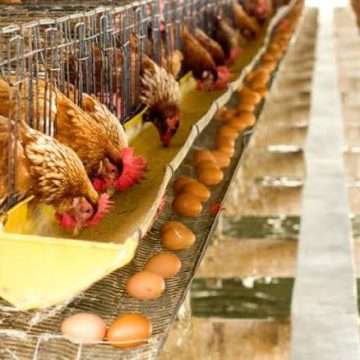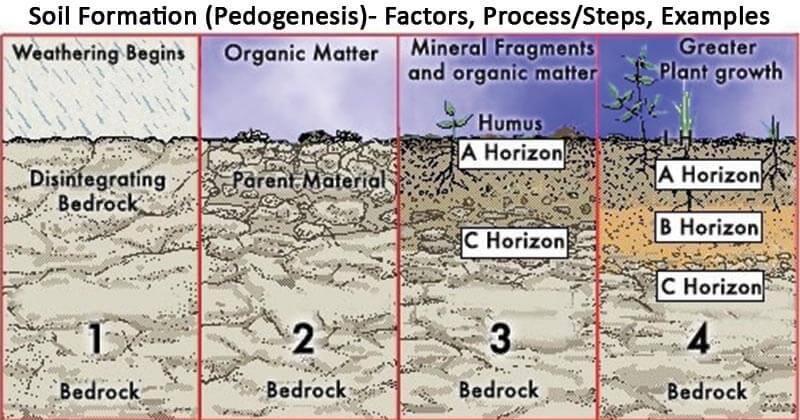Pedology
Pedology deals with the formation, genetics, origin of soil and morphology, and other related characteristics.
There are physical, chemical, and biological characteristics of the soil for it to be productive.
Pedology is reflected as the origin and also the formation of the soil.
What is Soil?
Soil is a medium for seed germination, and crop growth, and a medium for dissolved nutrients. It has 3 dimensions: it has length, width, and breadth.
Pedology comes from 2 words pedom and logy. Pedon means the smallest volume that can become soil while logy means study.
3 phases can be used to describe soil: Open system, Closed system, and dynamic system.
In an open system, soil can receive material from the upper surface to the inner. Materials like air, water, and salt.
The ability of the soil to receive material from the upper surface is termed an open system.
Different Meanings of Soil
Soil is the upper stratum which is often referred to as the solid of the atmosphere upon which plant grows and other subjects are stabilized.
Soil may also be referred to as the natural body on which the plant grows. Soil has many meanings to different specialists.
To agriculturists, the soil is regarded as entities for growing crops or as a productive stratum on which a plant grows as a result of the supply of nutrients contained in the soil.
To the housewife, the soil is regarded as a speck of dirt that needs to be swept or thrown away.
But to the engineer or civil engineer, the soil is regarded as a stratum upon which foundation may be rendered adequate, and they also see soil as a support for any construction work.
Also to the engineer, the soil is regarded for use for example, for roads and highways and another industrial purpose of adverse effect is a civilization which has rendered most soil dumpsites for refuse and other contaminants.
Soil surface and sub-surface
A surface would be regarded as a portion to which the root of a plant could proliferate.
It could also be referred to as fallowable later and it ranges from 0 on the surface to 15cm on the lower surface.
The soil surface is more mature chemically, biologically, and physically.
This is a result of the presence of micro-organisms, characteristics which include bulk density, particle density, infiltration, percolation, pore size and pore sides distribution, nutrient concentration, nutrient absorption, and desorption.
Soil sub-surface
The sub-surface is that portion of the profile that is below the surface of the soil greater than 15cm and up to 200cm.
Why 200cm? Because pedologically, 200cm is the depth for a normal pedological profile.
The subsurface is more responsive pedologically while the surface is more responsive fertility-wise.
15cm is regarded as an arbitrary boundary. The sub-surface is a region of deposition as a result of transported materials from the surface of the soil.
Also, the surface has lesser organic matter but has a higher percentage of small pores.
Another name for the soil sub-surface – Epipedon
An epipedon is also regarded as a soil surface. It is not synonymous with soil surface because the soil surface refers to the portion of the soil exposed to the atmosphere.
While the epipedon may include only the surface or part of the A horizon or all the parts of the A horizon and may also include some parts of the B horizon,
Soil genesis
This is the branch of soil surface that deals with the factors and processes of soil formation.
When considered with soil classification, it is referred to as a science that deals with evolution, utilization, and mode of formation.
Soil genesis consists of two main steps
- Accumulation of parent materials
- Differentiation of horizons of the soil profile
These two steps are inseparable, that is, one process integrates into the other process so that no one can come out with a distinct separation, and it could be regarded as a system and automatic.
Accumulation of parent materials
i. Rocks and rocks weathering:
Of more than 90 chemical elements known, 98% of the earth is made from it.
These elements exist in various chemical elements combination called minerals which in turn are combined to form rocks.
Soil formation and minerals nutrition of plants are attributed to rocks weathering (both physical weathering and chemical weathering) to release contained mineral nutrients.
The elements include Silicon, Carbon, Oxygen, Nitrogen, Hydrogen, Potassium, etc.
ii. Rocks important in soils
Depending on the mode of formation, they are many rocks as well as transitional between these groups, these groups are igneous, metamorphic, and sedimentary rocks.








